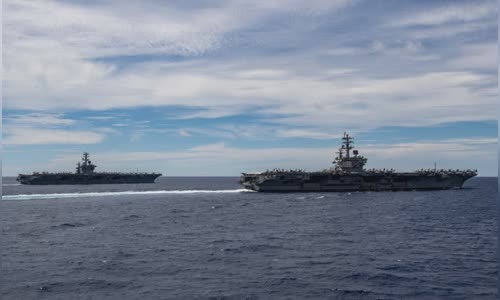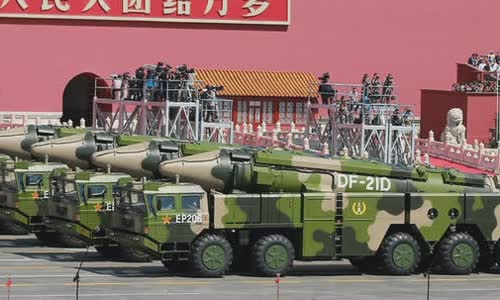Advances in Russian and Chinese anti-ship missiles put American carriers at increasing risk of destruction in conflict.
China in August 2020 launched a DF-26B missile from Qinghai province and one DF-21D missile from Zhejiang province toward the South China Sea.
The move comes a day after China accuses US U-2 reconnaissance provocative when moving into "no-fly zone, where the Northern War Zone real-shot drills are taking place".
The Russian Navy also tested three Zircon supersonic missiles last year from the Admiral Gorshkov's escort ship, targeting two targets at sea and one on the ground from a distance of 350-500 kilometers.
"These tests are the latest indication that US carriers, which are considered 'king of the oceans', will soon face real threats," said Business Insider commentator Benjamin Brimelow.
American aircraft carriers have always been seen as the biggest target for their peers.
The declassified U.S. Central Intelligence Agency (CIA) documents show that Soviet officials rarely criticized the aircraft carrier during internal discussions in the 1980s, even praising them for their availability.
A 1979 document showed that the US aircraft carrier was "the first priority in destroying attacks" when the conflict broke out, followed by the amphibious assault ships.
With this strategy, the Soviet Union developed an aircraft carrier countermeasure that revolved around anti-ship cruise missiles launched from surface ships, submarines and bombers.

Two US aircraft carriers rehearsed in the South China Sea in July 2020 Photo: US Navy
The Tu-16, Tu-22 and Tu-95 naval bombers are the platform for the airborne missile deployment, while the destroyers, cruisers and nuclear attack submarines are armed with a variety of anti-ship missiles.
However, this may not be enough.
American carrier dominance was further assured after the collapse of the Soviet Union and the end of the Cold War.
Aircraft carriers are Beijing's biggest concern.
The Chinese military at that time realized that they had absolutely no weapons to suppress American aircraft carriers, even though they operated not far from the coast.
After this event, China viewed US carrier dominance as a manifestation of gunboat diplomacy, showing that Beijing would always be "underneath" over the deep seas if there was no plan to resist repression
China has invested heavily in anti-ship capabilities.

DF-21D missiles parade in the Chinese capital Beijing Photo: AP
Rockets have always been China's top priority.
The DF-21 and DF-26B shells launched into the South China Sea in August have a range of 2,100 km and close to 3,900 km, respectively.
Chinese anti-ship ballistic missiles have much greater range, speed, and altitude than Soviet-era cruise missiles, allowing them to penetrate the defensive shields of the carrier strike group and force the fleet.
The report released by the Pentagon last year acknowledges that missile technology is an area where China has "reached balance, even surpassed the United States".
Ultrasonic missiles are also a serious threat to US aircraft carriers.
China has two types of supersonic missiles, including the DF-17 and the DF-100.
British officials have repeatedly expressed concerns about the threat of Russian supersonic missiles to aircraft carriers.
"The true capacity of Russian and Chinese anti-ship weapons is still a mystery, but recent tests show that US aircraft carriers will soon lose their current dominant position at sea," said Brimelow.



 Dana Vironet
Dana Vironet







